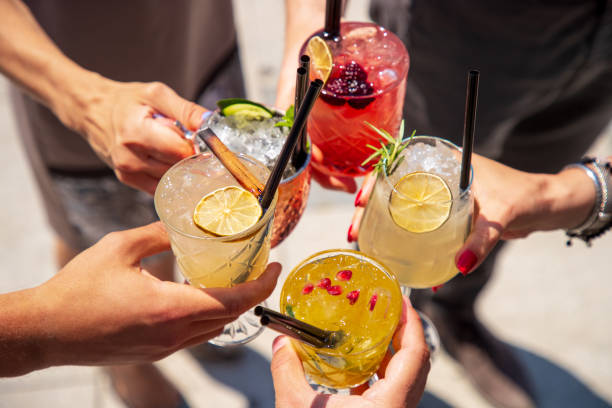At our ‘Thirst for Knowledge’ Conference in March we had a look at the trends happening in the alcohol category where it’s well known that consumers have evolving tastes and are constantly on the lookout for something new, but did you know that 46% of consumers change the cocktail they drink based on the time of year. Cocktail drinkers are big spenders too and are likely to influence where their group goes on a night out, so tailoring your drinks strategy to give cocktail drinkers what they want could have a big impact on your business.
The conference, hosted by The Knowledge Bank, was filled to the brink with insights about the alcohol sector and trends consumers will be looking for. Some of the bigger trends included:
1. Drinking around the world
Japanese flavours like miso and yuzukosho, Korean ingredients like Soju and sesame, and new Chinese spirit distilled from sorghum – Baijiu – are all making their way into cocktails. And from Mexico, the Michelada – a cocktail similar to the Bloody Mary but using beer as its base – is becoming more popular, alongside other spices and sour flavours from the region.
2. Hot and savoury
Speaking of spice, heat is rising in popularity: jalapeno infused spirits, cocktails rimmed with chili powder or sriracha salt, and chili liqueurs have all been spotted behind bars lately.
And while people used to meet for a cocktail before a meal, they’re now looking for those savoury flavours to be in their drinks. Examples include juicing carrots for a ‘carrotini’, blending meat or shellfish through cocktails, and infusing spirits with milk (a process called milk-washing).
3. Foraging for flavour
Coastal botanicals, already used by gin distilleries (for example, in the Outer Hebrides), are gaining in popularity for usage in everything from beer to rum. These botanicals including seaweed add a distinctly local – and sometimes maritime – note to the drink.
4. Blurring the lines
The distinction between hard and soft drink categories is getting increasingly hazy. Hard seltzer is gaining in popularity, with more traditional alcohol brands trying to capitalise on the trend (see: Bud Light Seltzer’s Super Bowl ad). Similarly, soda brand Mountain Dew has replaced caffeine with alcohol in some markets.
Conversely, spirits are embracing the rapidly growing easy-to-consumer drinks with low or no alcohol options. Whether your chosen spirit is gin, rum, tequila or vodka, there’s sure to be an alcohol-free tipple available in the market now.
5. Conscious consumption
Given the amount of time climate change and other environmental concerns have been in the news – and the activism of Gen Z – it’s no surprise that alcohol companies are trying to embrace these more conscious consumers and reduce waste. Rum made from banana peels and beer made from excess bread are just two examples of the latest way companies are looking to reach them.
Consumers are looking for something a bit different: more than half (55%) of people worldwide believe craft and artisanal beverages are the choice for better quality. These drinkers are looking to invest in a specially crafted beverage that can be savoured and enjoyed during their long-awaited nights out. Whether they want spicy, savoury, or environmentally friendly, there are myriad ways for consumers to get their buzz (or not!) – keeping these trends in mind will help you, help them find it.
More information and trends identified at the conference can be found on The Knowledge Bank’s website www.theknowledgebank.scot


